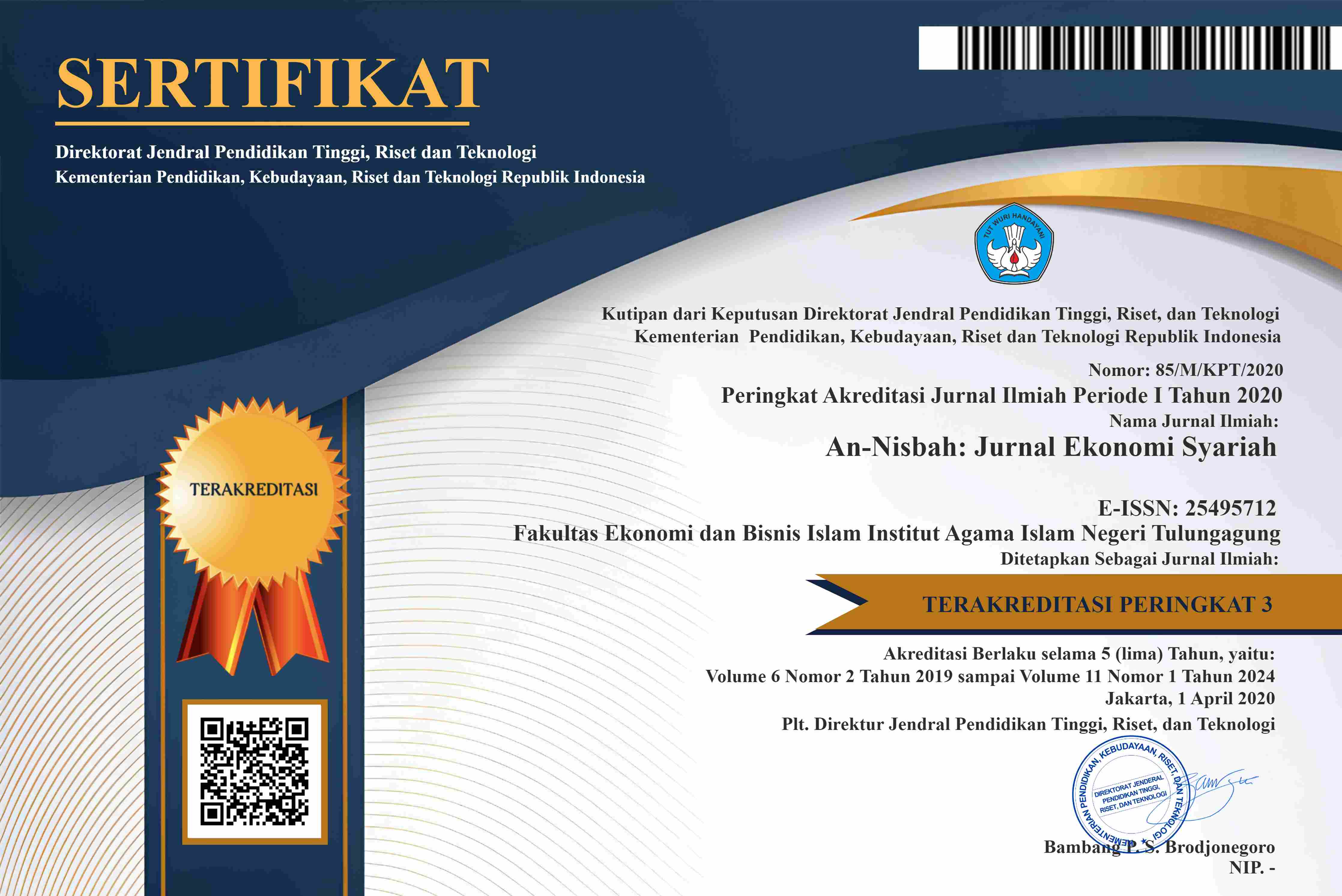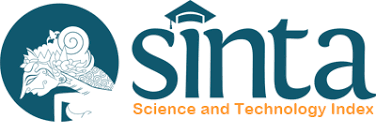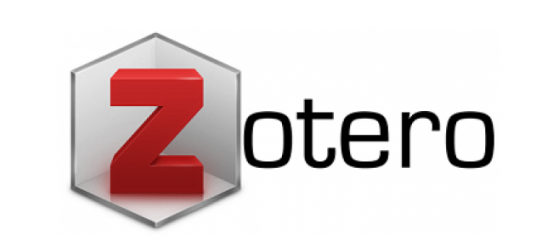DETERMINANT OF ISLAMIC FINANCIAL INCLUSION IN DIGITAL ERA: CROSS-PROVINCE ANALYSIS
Abstract
In recent years, the Islamic financial sector has become one of the most vital sectors in the Islamic economic system in Indonesia. Therefore, more attention needs to be paid to the measurement of Islamic financial inclusion and its and policy making, especially in facing the digitalization of economy, because the digitalization can be a momentum that provides opportunities as well as threats to Islamic finance. This study attempts to measure Islamic financial inclusion at the provincial level in Indonesia through the dimensions of accessibility, availability and utilization and analyzes the impact of digitalization on Islamic financial inclusion. Measurements are made using the Sarma Index, while the analysis of the impact of digitalization on Islamic financial inclusion employs the fixed effect model on the balanced panel data. The measurement results show that developed provinces tend to have higher levels of Islamic financial inclusion compared to developing provinces. Furthermore, provinces with a Muslim majority have a higher level of Islamic financial inclusion compared to provinces with a Muslim minority populations. In the panel data analysis, it was found that internet penetration has a negative and significant effect on Islamic financial inclusion, which shows that the majority of people in Indonesia still use the internet to access entertainment content and that internet use has not been optimized to access financial services. Nevertheless, the presence of the Islamic fintech platforms has a significant positive effect on Islamic financial inclusion in Indonesia. The variable level of cell phone usage has no significant effect on the level of Islamic financial inclusion and the average length of schooling has a significant negative effect on Islamic financial inclusion.
Downloads
References
2. Ali, M. M., Sakti, M. R. P., & Devi, A. (2019). Developing An Islamic Financial Inclusion Index For Islamic Banks In Indonesia: A Cross-Province Analysis. Journal of Islamic Monetary Economics and Finance, 5(4), 691–712.
3. Bruhn, M., & Love, I. (2009). The Economic Impact of Banking the Unbanked Evidence from Mexico.
4. Camara, N., & Tuesta, D. (2015). Measuring Financial Inclusion: A Muldimensional Index. SSRN Electronic Journal, (September). https://doi.org/10.2139/ssrn.2634616
5. Demirguc-Kunt, A., & Klapper, L. (2012). Measuring Financial Inclusion The Global Findex Database.
6. Dienillah, A. A., & Anggraeni, L. (2016). Dampak Inklusi Keuangan terhadap Stabilitas Sistem Keuangan di Asia. Buletin Ekonomi Moneter Dan Perbankan, 18(4), 409–430.
7. Hanivan, H., & Nasrudin, N. (2019). a Financial Inclusion Index for Indonesia. Buletin Ekonomi Moneter Dan Perbankan, 22(3), 351–366. https://doi.org/10.21098/bemp.v22i3.1056
8. Ibrahim, S. A., Mohd Roslen, S. N., Mohamad Salleh, N., Theam, T. S., & Lai, K. Y. (2018). Islamic Micro Financing: Crowd-Funding as a Drive to Improve Financial Inclusion in Malaysia. International Journal of Engineering & Technology, 7(4), 18–20.
9. Marginingsih, R. (2019). Analisis SWOT Technology Financial ( FinTech ) Terhadap Industri Perbankan. Cakrawalah, 19(1), 55–60.
10. Park, C., & Mercado, R. V. (2015). Financial Inclusion, Poverty, and Income Inequality in Developing Asia.
11. Sarma, M. (2008). Index of Financial Inclusion: Some Empirical Results (No. 215). https://doi.org/10.1007/978-81-322-1650-6_28
12. Sarma, M. (2012). Index of Financial Inclusion – A measure of financial sector inclusiveness.
13. Sarma, M., & Pais, J. (2011). Financial Inclusion and Development: A Cross Country Analysis. Journal of International Development, 23(5), 613–628. https://doi.org/doi.org/10.1002/jid.1698
14. Sharma, D. (2016). Nexus between financial inclusion and economic growth Evidence from the emerging Indian economy. Journal of Financial Economic Policy, 8(1), 13–36. https://doi.org/10.1108/JFEP-01-2015-0004
15. Umar, A. I. (2017). Index of Syariah Financial Inclusion in Indonesia. Buletin Ekonomi Moneter Dan Perbankan, 20(1), 99–126.
16. Zins, A., & Weill, L. (2016). The determinants of financial inclusion in Africa. Journal of Advanced Research, 6(1), 46–57. https://doi.org/10.1016/j.rdf.2016.05.001
The author has full rights to the articles that has been sent to An-Nisbah: Jurnal Ekonomi Syariah. The author is responsible for the originality of the articles and all the references used in the journal script.








